How to create a blog: 4 easy steps for beginners

As seen in:
Top 3 WordPress blog hosts
-
Visit site
Test score
8.9
2025
Very good
-
Visit site
Test score
8.6
2025
Very good
-
Visit site
Test score
8.4
2025
Very good
You want to start your own blog or become a blogger. Whether it’s a personal blog to earn money from blogging or a company blog.
But you’re still not sure how and where you can create a blog and how you can blog at all. You ask yourself questions like:
What’s the right topic? Which blog platform is best? Is it possible to create your own blog for free? How do I design my blog?
I’ll go through all the points with you step by step and answer your questions.
With my detailed blog creation guide, you can publish your first blog post today.
Are you ready? Then let’s get started!

How to start your blog:
- Table of contents
- How can I find the right topic for my blog?
-
Which blogging platform is best for me?
- There are basically three different types of blog platforms
- Find the right blog platform for you
- Is it possible to blog for free?
- Pros and cons of free providers
- You can use these platforms to create your blog
- The best choice for serious blogging: your own WordPress installation
- Pros and cons of your own WordPress installation
- Which web hosts are ideal for WordPress?
- How do I find the perfect name for my blog?
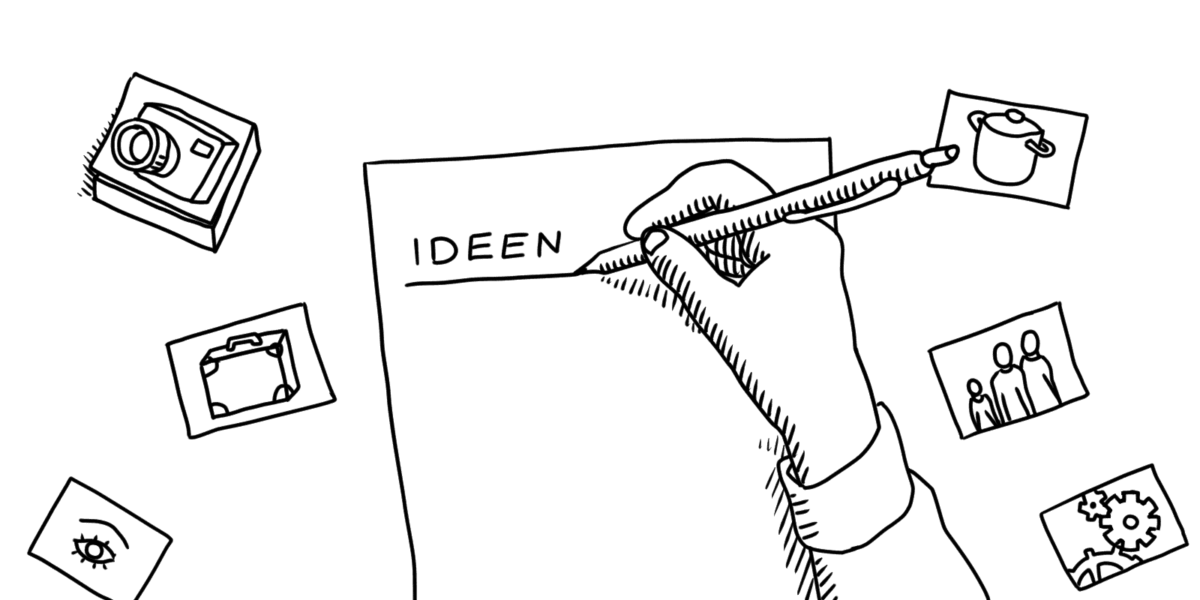
If you want to start a successful blog, the right topic is the first and most important decision you need to make.
A blog is an online diary or journal – usually kept by one person. In contrast to a conventional website, the posts on a blog, the blogposts, appear in chronological order. The blog can be part of a homepage.
Blog content often reflects a personal opinion and is written from a first-person perspective. An important role is played by the comment function, which enables direct contact with users.
In my opinion, it is precisely this personal connection to the author of the posts that is one of the main reasons why blogs continue to enjoy great popularity. So yes, blogging is still relevant.
That’s why your blog topic should also suit you and your interests and knowledge. Then you can write successfully and authentically.
Why blog? There are many good reasons!
Whether it’s the fun of publishing texts, the desire to start your own blog to earn money or to increase your own reach on the internet.
The reasons to start blogging are just as varied as the topics you can choose from.
The most important advantages of a blog at a glance:
- Open to all: anyone can write a journalistic blog and present themselves as an expert on a topic
- Personal : It appears less anonymous to readers than a normal website, as there is usually a single person behind it
- Up-to-date: By regularly publishing new posts, you can motivate readers to visit again and again
- Interactive: You can build a closer connection with your readers through the exchange in the comments
- Simple : You don’t have to design a complex website structure for a blog
- Google-friendly: Topic-related blog posts can help you build reach through SEO
- Inexpensive: You can run a professional blog for just a few euros a month and create a personal blog completely free of charge
What do you want to achieve with your blog?
Earning your own money is one of the main motivations for starting your own blog. In this respect, blogging will always be relevant. A few years ago, financially independent bloggers were still considered a rarity. Now there are more and more people making a living from blogging.
The career portal Indeed reports an annual income of almost 40,000 dollars for the average blogger. Even if you won’t rise to such heights in the first few months. One thing is clear: blogging can be financially rewarding.
With the right strategy, you can increase your company’s turnover with blogging. It doesn’t matter whether you have an insurance agency, a bookshop or an online shop.
I’ll show you all the methods for earning money with your blog and becoming financially independent in the long term later on.
The internet has completely shaken up society and the business world. Today, you no longer need to place expensive adverts, radio or television commercials to draw attention to your company.
On the Internet, you can attract new customers even with a small budget. An effective tool is the company blog, which you can use to blog yourself and promote your company website.
With the right strategy, which I will explain in the next few chapters, you can attract new potential customers, build trust and highlight your expertise and products.
Google loves regular and good content. With a little effort, you can quickly increase the number of visitors to your website significantly.
Are you an expert in your field and want to share your knowledge? Perhaps you are a coach or marketing professional and want to win new customers? Then writing a blog is just the thing for you!
Blogging allows you to share your expertise with others. Your readers will thank you with attention, Google with good rankings. You can make a name for yourself with in-depth articles on your speciality.
You expand your network and meet new interesting people. These people may later become clients or customers.
And who knows? Maybe your blog posts will one day form the basis for your own book?
As the number of websites grows – there are currently over 17 million domains with a .de extension alone – so do the hurdles to achieving a top position in the Google rankings.
In recent years, it has become increasingly difficult for small companies, associations or self-employed people to become visible in the search engines.
Creating a blog is one of the website optimisation measures that even beginners can easily implement.
However, a blog is not a visitor magnet per se. But if you stick to a few rules, you can boost your website’s SEO score with a blog.
Tips for blogging: I’ll show you later how to write blog posts that Google will love. But first I’ll clarify the question of how to start a blog in the first place and where you can blog. And whether it’s possible to create a weblog for free.
Blogs started out as online diaries. Today, many people still use blogs to share their thoughts and creative moments – and to exchange ideas about them.
You may find it a little strange that, in theory, people all over the world can read your personal words.
Blogs offer a solution to this. You have the option of blogging in a truly private way by publishing your entire blog or individual parts or articles with password protection. Then only the people you give the password to will have access.
You can use this principle to set up entire members-only areas on your blog. Another option for earning money by creating a weblog.
How to find a blog topic that suits you
Most bloggers give up their blog after just a few months. The main reasons: The chosen topic no longer really interests them, success doesn’t materialise quickly enough, or the work with the blog becomes too much.
So before you start blogging, you should think carefully about which topic you are so passionate about that you would want to spend years on it.
Already have a rough idea?
Great! But maybe you should refine your topic?
If you are interested in travelling or food, for example, then a restriction such as “travelling by train” or “food from India” could be more promising: Your ideal topic should be neither too general, nor too specific.
If you don’t have an idea yet, no problem. In principle, you can start a blog for any topic.
However, there are a few criteria that speak in favour of the suitability of a particular topic.
Answer the following questions about your blog topic:
- Am I an expert? Do I have something to say or share on the topic?
- Am I enthusiastic about the topic? So much so that I will stay on the ball?
- What is the reader potential? How many people are interested in my topic? Do other blogs already exist? What is my specific niche? Or is my topic perhaps too specialised?
- Is the topic broad enough? Is the chosen topic diverse enough to write 100 or more articles about?
- Is it lucrative? Can I earn money with the topic? (Of course, this only applies if blogging is to become a financial mainstay rather than just a hobby)
Finally, I suggest a little exercise to help you find a topic:
Write down your favourite topic and let your thoughts run free. Write down ideas for blog posts that absolutely have to be written on this topic.
If you have difficulties, this shows that the topic is perhaps not so suitable after all.
If you come up with ten or more ideas in a short space of time or would like to start writing straight away, this is a good sign. The topic suits you!
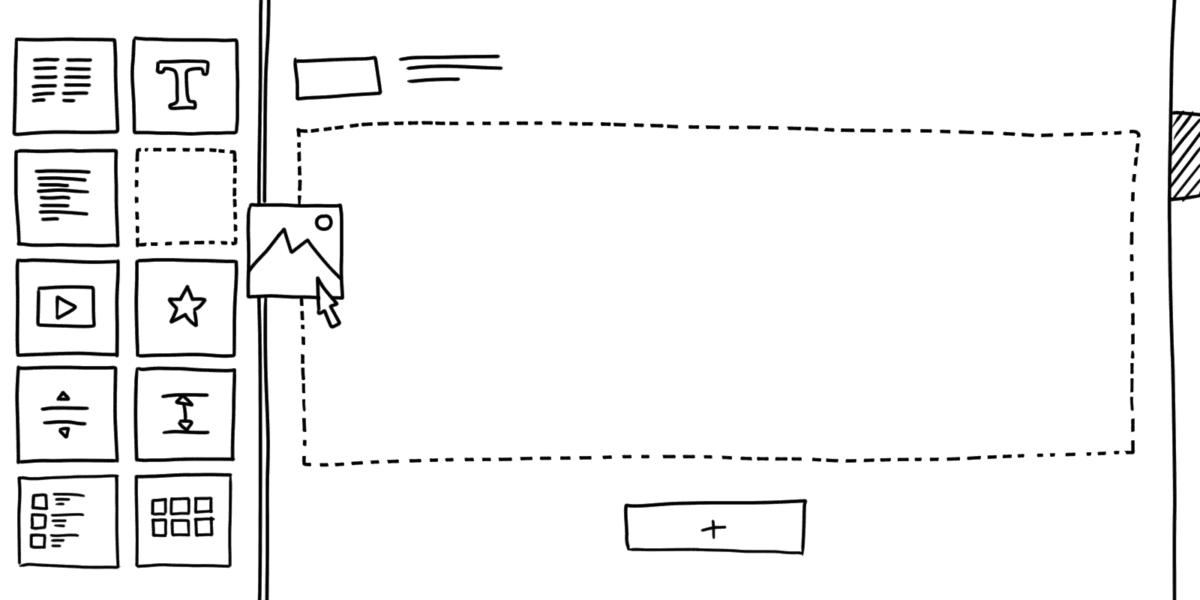
Wondering where you can create your own blog? There are various services where you can start and publish your blog.
In this section, I’ll introduce you to the individual blog platforms in detail.
I’ll also help you find the tool that’s best for you.
There are basically three different types of blog platforms
- Free tools such as Blogger.com or Tumblr
- Website builders such as Wix, Jimdo or Squarespace
- WordPress (self-hosted or at WordPress.com)
Tools or website builders that allow you to create your own blog for free are great for getting started, but quickly reach their limits when it comes to expanding.
If you’re serious about blogging, you should start your blog right away with a WordPress installation and your own domain.
Find the right blog platform for you
How do you want to create your blog? Find a detailed comparison of all the providers I have tested:
-
1 Affordable WordPress

Test score
8.9
2025
Very good
Pros and Cons
- WordPress securely installed with 1 click
- Control over functions and data
- Huge range of extensions and designs
- Automatic updates and backups
- Using WordPress is more complicated than a website builder
Visit sitePricing
- IONOS WordPress
- Fast server hardware
- Incl. domain & email addresses
- From £1 / month
- 30 days money back
-
2 Fastest WordPress

Test score
8.6
2025
Very good
Pros and Cons
- Professional managed WordPress hosting
- WordPress pre-installed
- Lightning fast server
- Email and domain included
- Automatic backups
- Highly scalable server performance
- More expensive than mass providers
Visit sitePricing
- WP Space “Pro”
- Recommended up to 50,000 visitors/month
- Free migration and setup
- Free domain and email address
- 14,99 € / month
- 30 days free trial
-
3 Pro WordPress hosting

Test score
8.4
2025
Very good
Pros and Cons
- Professional managed WordPress hosting
- WordPress pre-installed
- Very fast server
- Automatic backups
- Free WordPress migration
- Server performance highly scalable
- More expensive than mass providers
- Functionality can seem overwhelming for beginners
- Domain & email cost extra
Visit sitePricing
- Raidboxes “Mini”
- Recommended up to 25,000 visitors/month
- Free migration and setup
- £15,00 / month
- 14 days free trial
-
4 Best design templates

Test score
7.9
2025
Good
Pros and Cons
- Particularly stylish & mobile-optimised design templates
- Templates for every industry
- Integrated marketing and analysis tools
- Access to over 40 million images
- Comparatively few add-ons (or cost extra)
- Email inbox costs extra (via Google Workspace)
Visit sitePricing
- Squarespace Personal
- With your own domain
- from 11,00£ / month
- Test 14 days free of charge
Not sure yet? I’ll go into the pros and cons of the different solutions in more detail below.
Is it possible to blog for free?
As already mentioned, it is generally possible to blog for free. You can use platforms such as Blogger.com and Tumblr or the WordPress.com private plan.
Before I created my first blog online, I also asked myself where the best place to blog was. I started my first blog at Blog.de, a service that no longer exists. Creating a blog there was free.
Website builders such as Wix, Jimdo or Squarespace also offer you the option of blogging for free. To do this, you choose one of the permanent (trial) versions.
If you choose one of these options, you can start your blog very quickly and at no cost. One advantage is that you have a community of bloggers around you to help you get started. And you can network with them.
However, you are limited in the long term.
You don’t have your own domain, usually no opportunity to earn money and there are also major hurdles when moving blogs.
This type of blogging is only recommended if you want to create a private blog and run it privately on a permanent basis.
Pros and cons of free providers
- Free of charge
- Often very easy to use
- Community
- No own domain possible
- Limited flexibility in design
- Only limited expansion options & plugins available
- Povider can disappear from the market
- Changing the provider not easily possible
My experience: Because of the restrictions and because I wanted to go higher, I gave up my first blog after a year and started a new blog based on WordPress.
You can avoid these problems.
If you plan to blog seriously, you need a professional setup. It’ s best to start with WordPress and your own domain.
The costs amount to a maximum of a few euros per month. Don’t worry, I’ll show you step by step how to start your WordPress blog.
You can use these platforms to create your blog

If you are serious about blogging
Over 40 per cent of all websites, including WebsiteWissen.com, use WordPress. It was even developed specifically for blogging.
WordPress itself is free of charge. You only need to budget a few euros a month for hosting to set up such a blog.
Beginners are best advised to use a WordPress web hosting provider such as IONOS WordPress, which already offers pre-installed WordPress.
Instructions for creating a blog: In the next few steps, I’ll show you in detail how it works.
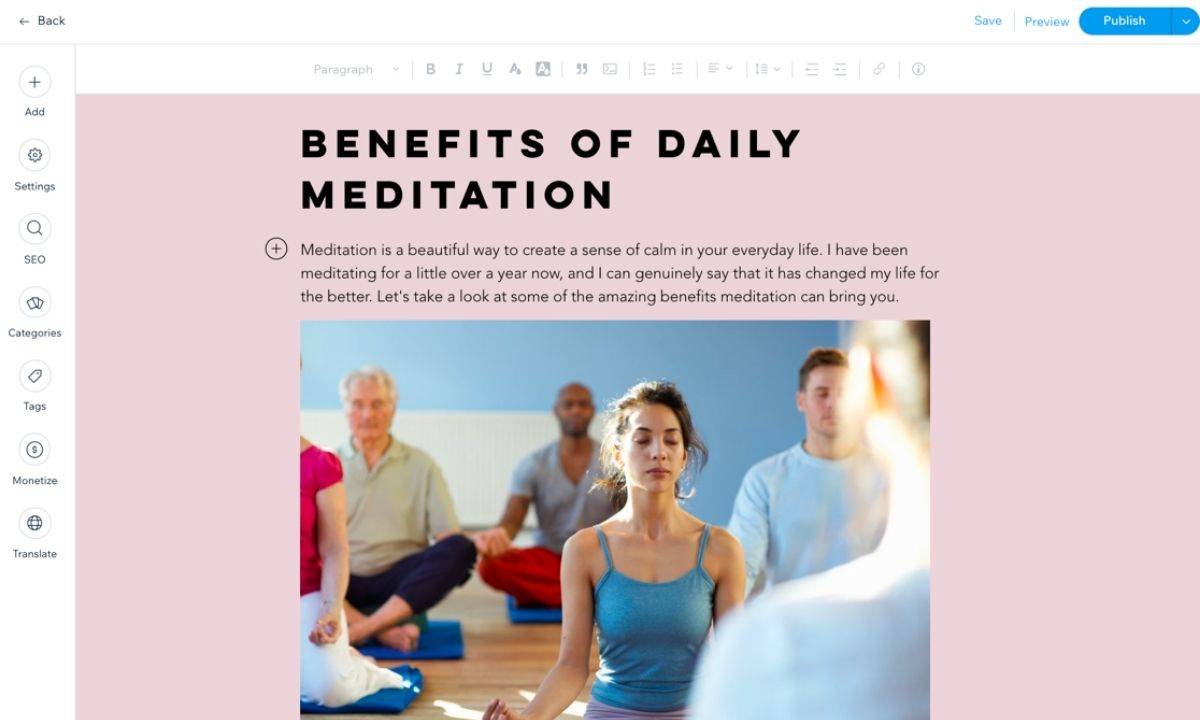
The easy way to a blog
A website builder allows you to create a website without any prior technical knowledge – simply by dragging and dropping in your browser.
However, website builders are usually a little more expensive than WordPress hosting. They also make it less easy for you to change providers later on and prevent you from expanding and optimising your blog at will.
However, if your blog serves as an extension of a simple classic website or you want to blog privately, creating a blog using a website builder can make sense.
Squarespace* offers you particularly elegant blog designs. WIX* is the No. 1 home page builder and offers good blog features.
In my article on how to create a website, I present the website builders in detail.
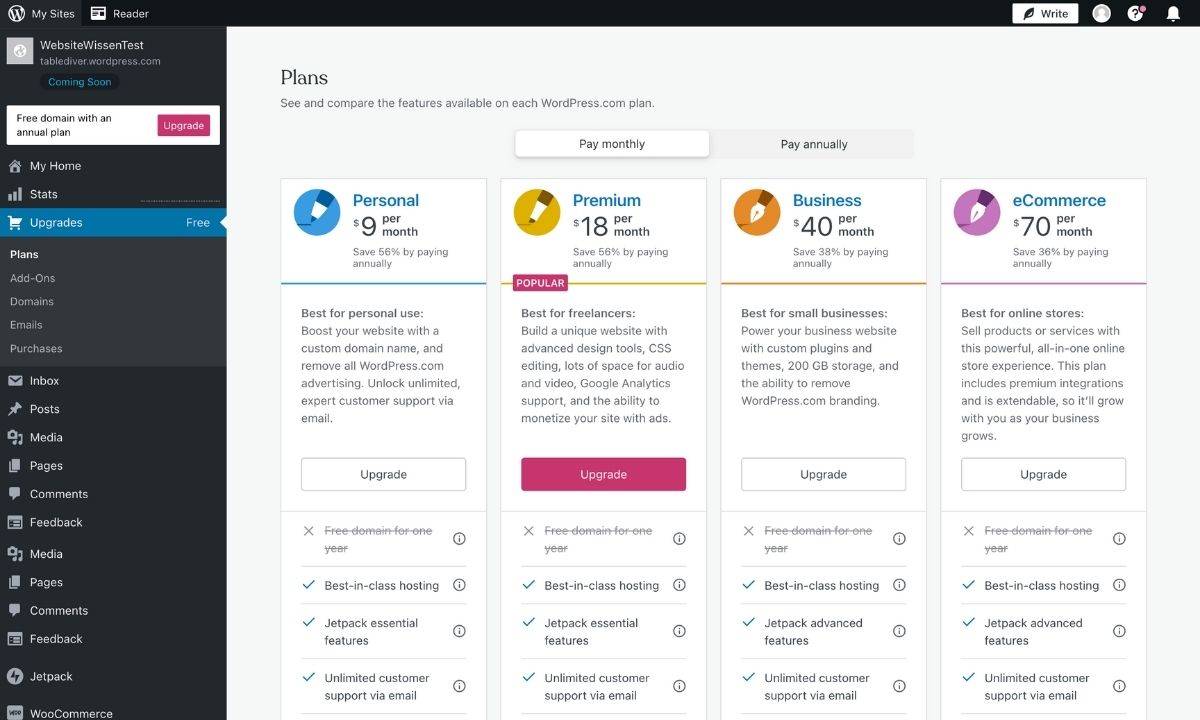
To try WordPress for free
WordPress.com (not to be confused with WordPress.org) is a paid hosting service. With WordPress.com, the WordPress CMS is conveniently pre-installed.
In contrast to a self-hosted WordPress, however, you are severely restricted in terms of the use of themes and plugins with WordPress.com.
The less attractive price-performance ratio also speaks against the use of WordPress.com. You only have real flexibility from the business tariffs (from 25 euros/month).
However, WordPress.com offers a permanently free trial version. Although you don’t get your own domain there, you can use the platform to start a blog for free on a trial basis. This way, you can also learn how to blog without obligation.
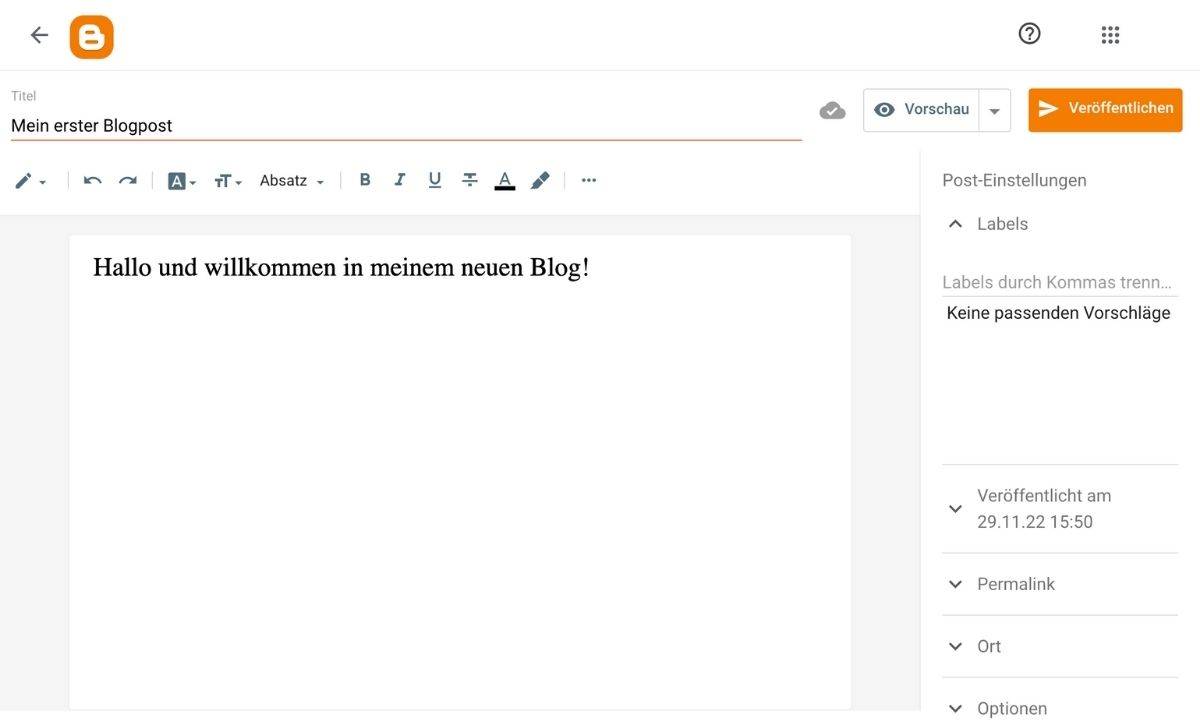
The Google blog
Blogspot/Blogger.com is one of the oldest blog platforms and has been part of Google since 2003. Similar to a homepage construction kit, you can customise your blog with various design templates and images. Creating a weblog here is free of charge.
Thanks to the proximity to Google, you can start earning money through the uncomplicated integration of Google AdSense. However, you won’t earn more than a few euros a month at the beginning.
A Google account is a prerequisite for a blog on Blogspot/Blogger. However, I only recommend the platform if you want to blog privately.
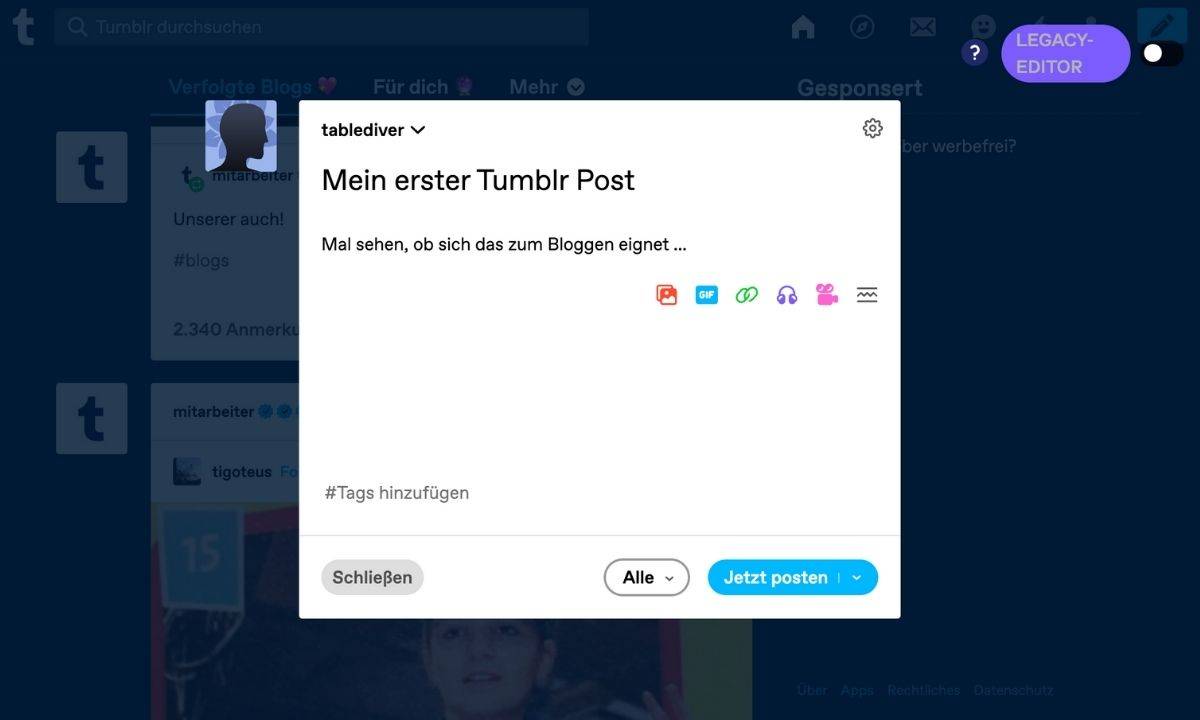
Tumblr, which is now owned by WordPress.com operator Automattic, is a free blogging community similar to Blogspot. Texts, images, videos and audio files can be published on the blogging platform.
The special thing about Tumblr is that users can easily share content from other users via the reblogging function. It is therefore more of a social network than a home for professional bloggers.
The best choice for serious blogging: your own WordPress installation
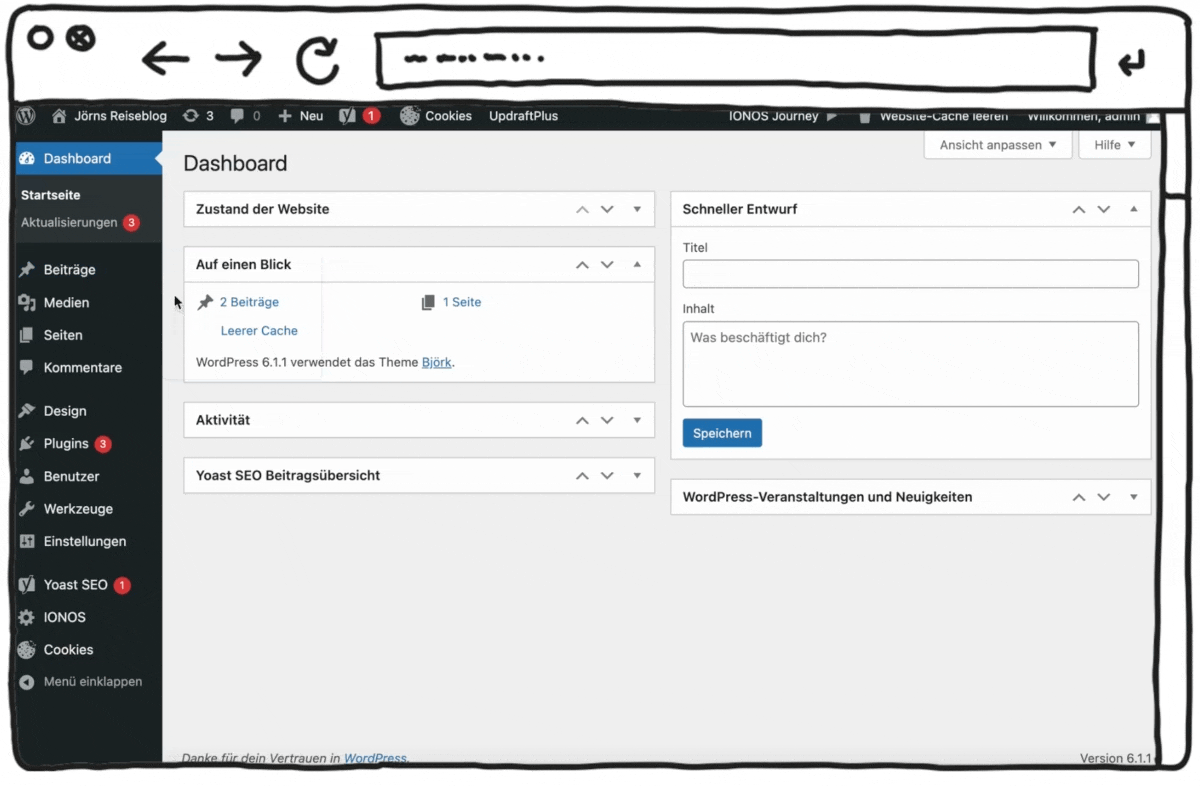
WordPress was designed as a blogging platform and is by far the leading solution in this area.
The high level of flexibility and the huge ecosystem of themes and extensions also make WordPress attractive beyond blogging.
For you, this means that you are doing everything right with WordPress as an “operating system for blogging“. And if you later want to turn your blog into a large online magazine or integrate an online shop, this is possible without any restrictions.
To set up your own WordPress blog, you need storage space on a server where you can host the installation. The software required for the WordPress installation itself – the WordPress CMS – is open source and free of charge. The web host costs around five to ten euros per month.
For beginners, I recommend choosing a host that offers a one-click installation for WordPress. Then you don’t have to worry about any technical questions regarding the installation. You simply start by setting up your WordPress website.
Pros and cons of your own WordPress installation
- Inexpensive: Setting up a WordPress blog costs you nothing, fees only apply for hosting
- Built for blogs: Many functions specifically designed for blogging, such as the comment field
- Expandable: There is a large number of themes (design templates) and plugins (extensions) available
- Help: Helpful community, numerous instructions (tutorials) available
- Control: You have control over all data
- Freely customisable: Your blog can be adapted very flexibly
- Learning curve: More time required for familiarisation than with website builders
- Effort: Administration more time-consuming, e.g. due to updates
- Security: Vulnerability to hackers with outdated installations and plugins
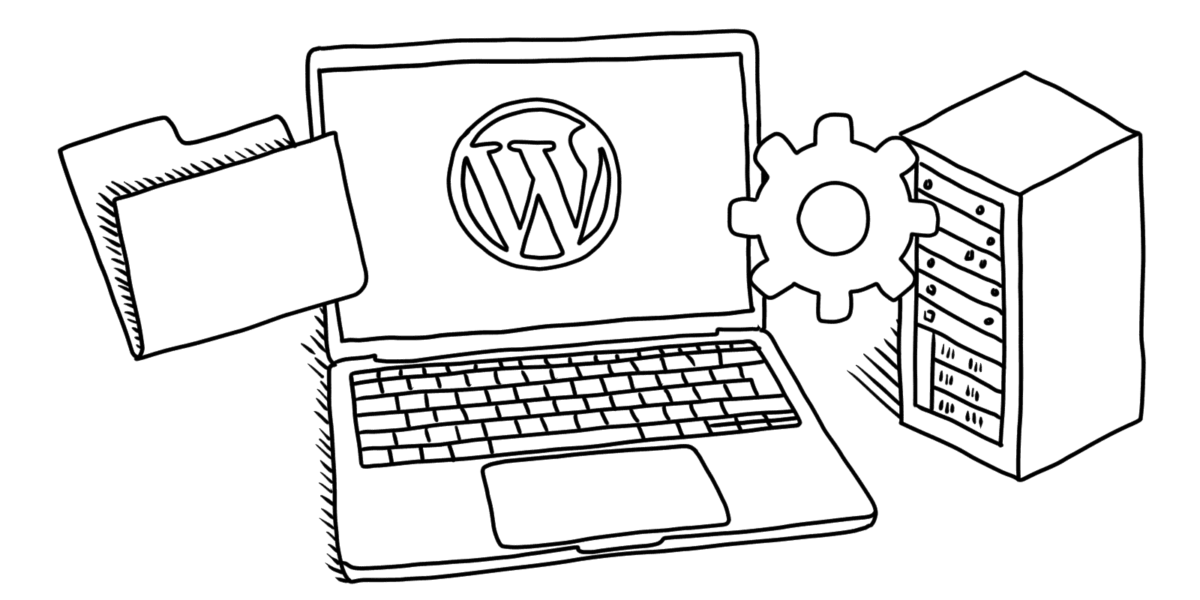
The following sections are all about installing and setting up WordPress correctly. It can get a little technical.
But don’t worry: I’ll explain all the necessary steps for starting your WordPress blog in detail, so you’ll be able to jump over any minor hurdles with ease. Afterwards, you’ll be able to answer the question of how to start a blog yourself and will be all the more proud of yourself and the result.
I will also limit myself to a selection of special WordPress web hosts where the installation effort is limited to entering the most important data.
With modern web hosts, most technical aspects such as installing software, setting up databases or FTP uploads can be automated in the browser.
Web hosting terms you might come across
Due to the popularity of WordPress, some web hosts have been offering 1-click installations for some time now. With this function, WordPress can be installed quickly and easily – almost with one click. In fact, a few more clicks are required, such as entering the name of the website or username and password. However, the installation is completed within a few minutes and your WordPress blog is ready to go.
MySQL (Structured Query Language) is a database management system developed by Oracle that, like WordPress, is open source. It is probably the most popular database solution for WordPress sites and a prerequisite for installing the CMS. Data such as your blog articles and user login information is stored in such a database. Normally, a MySQL database is sufficient. However, you don’t need to worry about this with 1-click installations.
How can I recognise a good WordPress web host?
You need a good web host to set up your blog with your own WordPress installation. But which provider is the right one for your blog launch? The choice of providers for online storage space is huge and the differences are often not so easy to see through. I will therefore give you a few criteria that you can use as a guide.
For your purposes, it is crucial that the web host has customised its offering for WordPress. You can install your WordPress CMS with any web host. However, without a special WordPress package, it can be much more technically demanding to create a WordPress blog. You also bear more responsibility for the security of the server environment and the installation.
These are the criteria for a good WordPress web host:
- WordPress is pre-installed
- Server environment is optimised for fast loading times and the operation of WordPress
- Integrated caching to improve loading times
- Security functions such as malware and virus checks
- SSL certificate integrated automatically and free of charge
- Automatic updating of WordPress and WordPress plugins
- Competent and easy to reachcustomer support
- Server location in Germany or the EU (legal certainty and faster loading times)
Web hosting providers can basically be divided into two categories: the large providers, which are more geared towards mass production, and the professional providers, which specialise more in performance.
While the former offer solid services that get you safely to your destination – like a VW – the latter get you travelling faster – like in a Porsche. But you’ll have to pay more for this.
Blogging for beginners: To get started with blogging, I recommend the solid VW variant: IONOS WordPress hosting*.
The German web host offers a dedicated WordPress tariff that fulfils all of the above criteria. It’s also easy to set up and the price-performance ratio is particularly good.
If your blog has already been successfully launched, you value top performance and a few euros more per month won’t hurt you, then WP-Space* is the WordPress web host with the best performance.
Recommended WordPress webhosts
All recommended providers offer you secure and convenient hosting for your WordPress blog.
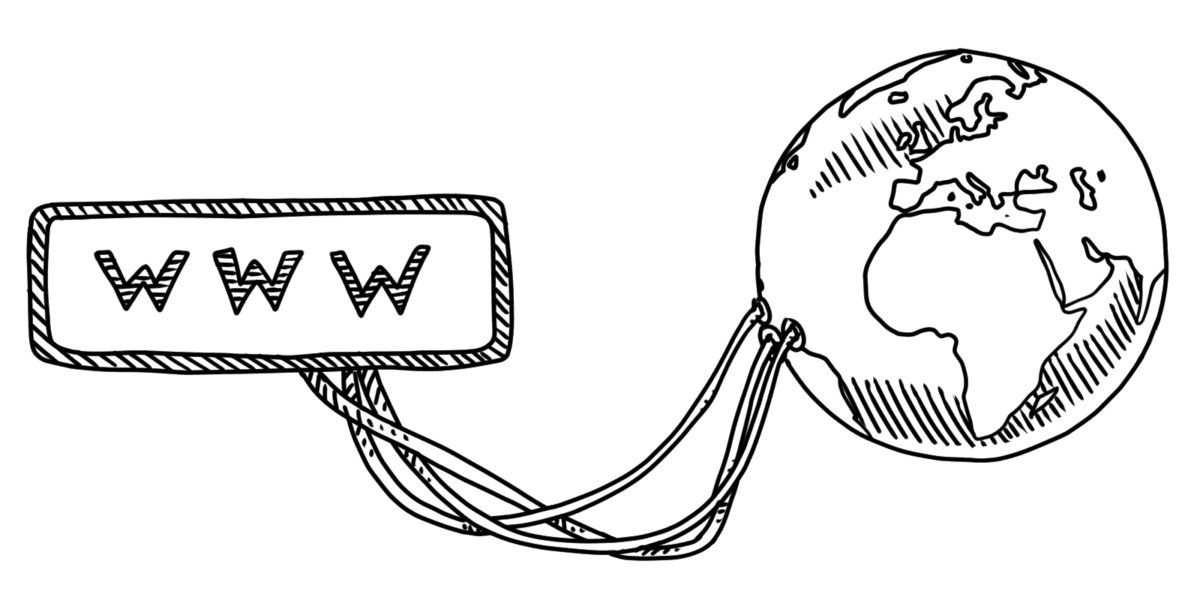
To create a blog, you need a name, of course. Ideally, this should include a domain with the same name under which your visitors can find the blog.
Here I give you tips on choosing a good blog name. I’ll also explain what you need to consider when choosing your own domain.
Criteria for a good blog name
- Clear: The name makes it clear what the blog is about (e.g. “WebsiteWissen” = blog with advice and instructions on website topics)
- Short: Easy to remember and not too long
- Readable: Easy to read and easy to pronounce
- Suitable: Appropriate for your target group (e.g. not too flippant for a financial blog or just funny for a younger target group)
- Keyword: Ideally contains the main search term for your blog topic (for us: “website”)
- Expandable: Names should be more general so that you can expand your topic if necessary (“WebsiteWissen.com” is more general than just “BlogErstellen.com”)
Also make sure …
- that the name and the associated domain are still free
- that you are not infringing any naming or trademark rights with the name
Ideas and inspiration for your unique blog name
It may not be so easy to find a name. Many names are already taken or the domain is occupied.
To help you come up with ideas, here are 3 ways to find a good blog name.
Approach 1: Association
Combine your topic with a descriptive term or a suitable association
Overall topic: Cooking & recipes/more precise definition: Traditional dishes
Combination: “Grandma’s recipe book” or “kitchen fragrance blog”
Approach 2: Reader promise
Combine your topic with a promise you make to your readers:
Topic: Create your own blog/promise: made easy
Combination: “EasyBlogger” or “Blogging for beginners”
Approach 3: Set yourself free!
Forget the direct reference of the name to the topic with which you want to start a blog. Choose a term that you like or one that you’ve made up.
Example: Our friend Luca named his surfing and camping blog “Milchplus” after a drink from his favourite film “Clockwork Orange”. It has nothing to do with surfing or camping, but it’s very catchy – and he started a successful blog with it.
To find other phrases or synonyms for a term, it can be helpful to use synonym dictionaries such as Thesaurus.com. If you have no idea what to call your blog, then maybe try a name generator like Looka.
Whether you need your own domain – and what you need to bear in mind
A domain is an address on the Internet, for example
https://yourblogname.com
The domain ensures that users can find your blog.
A subdomain is a part of a domain. It could look like this:
https://yourblogname.domain.com
With the free trial offer from WordPress.com, for example, you get a subdomain that would look something like this:
https://yourblogname.wordpress.com
A subdomain may be sufficient to create a private blog. However, I advise you to use your own main domain. Especially if you want to use the blog for your company website or to earn money.
A customised domain for your blog, such as yourblogname.com, looks much more professional. It also makes it easier for your users to remember the name.
If you use the blog for business purposes, you can communicate much more professionally via email thanks to your own domain. You can then set up your own address:(Your.Name@yourblogname.de).
Although a domain is not completely free, you don’t need to spend more than a few euros per year.
With a WordPress host such as IONOS*, the domain costs are already included. If you already have a domain, you can also connect it there.
You should take some time to choose your domain. After all, the right Internet address is the basis for starting your own blog. You also want to keep this domain for a longer period of time.
Criteria for a good domain name:
- The domain name should be as short as possible (maximum 20 characters)
- The domain should not contain umlauts or special characters such as “ä” or “ß”
- Avoid names that are difficult to understand or unusually spelt
- Ask friends or acquaintances for their opinion on your choice
The letter combinations “http://” or “https://” can be found at the very beginning of a domain. HTTP, short for Hypertext Transfer Protocol, is the technical protocol for transferring data on the internet in plain text.
HTTPS is basically the same protocol, but with the addition of a security component (Secure). These connections are encrypted using SSL certificates to secure the data transfer.
You can obtain an SSL certificate for your blog from your web host or domain registrar at the click of a button.
I am of the opinion that all blogs should have “https://”. Only then will readers perceive them as reputable. Most modern browsers only allow non-HTTPS domains to be accessed to a limited extent.
The subdomain “www” (World Wide Web) leads to the main page of a blog. However, it is not absolutely necessary. Your readers will normally find your blog with or without “www”. However, you should check this again when your blog is online.
The domain extension is almost as important as the domain name. Both your visitors and search engines use it as a guide.
Country-specific domains such as .co.uk or .us are an indication of the country in which you live or want to find your readers.
International domains such as .com or .org show whether your blog is intended to be commercial or whether you are running it for an organisation, for example.
Theoretically, you can use topic-specific domains such as .biz, .info or .london to draw even more attention to your blog topic.
Another option is the .blog domain extension, which was created especially for blogs. This allows you to directly signal to your readers that your site is a blog.
However, I recommend that you choose a .co.uk or .com domain.
The .com domain was created in 1985 for commercial websites and is used by over 150 million websites. This makes it widespread and the most popular domain extension on the web.
One argument in favour of .com is that there is a corresponding shortcut key on most smartphones. If your desired domain name is available, you can’t go far wrong with it.
The .blog domain can be a good alternative if your desired domain is already taken as .de or .com. One disadvantage is that the name may not fit so well later on if you want to develop your blog into more of a classic website or shop.
Especially if you want to run a personal or creative blog that focuses on your person, it may be worth using your name in the domain.
However, the blog is then permanently tailored to your person and tied to them. If you ever want to give up your blog, the associated domain would be useless for a potential buyer.
Your own name is also only useful in searches for your blog if someone is specifically looking for it. The name almost never contains search terms that correspond to the blog topic.
If you choose a domain with one or two main search terms, this can be an advantage for search engine optimisation. This advantage is lost if you use your own name as the domain.
How to register your blog domain
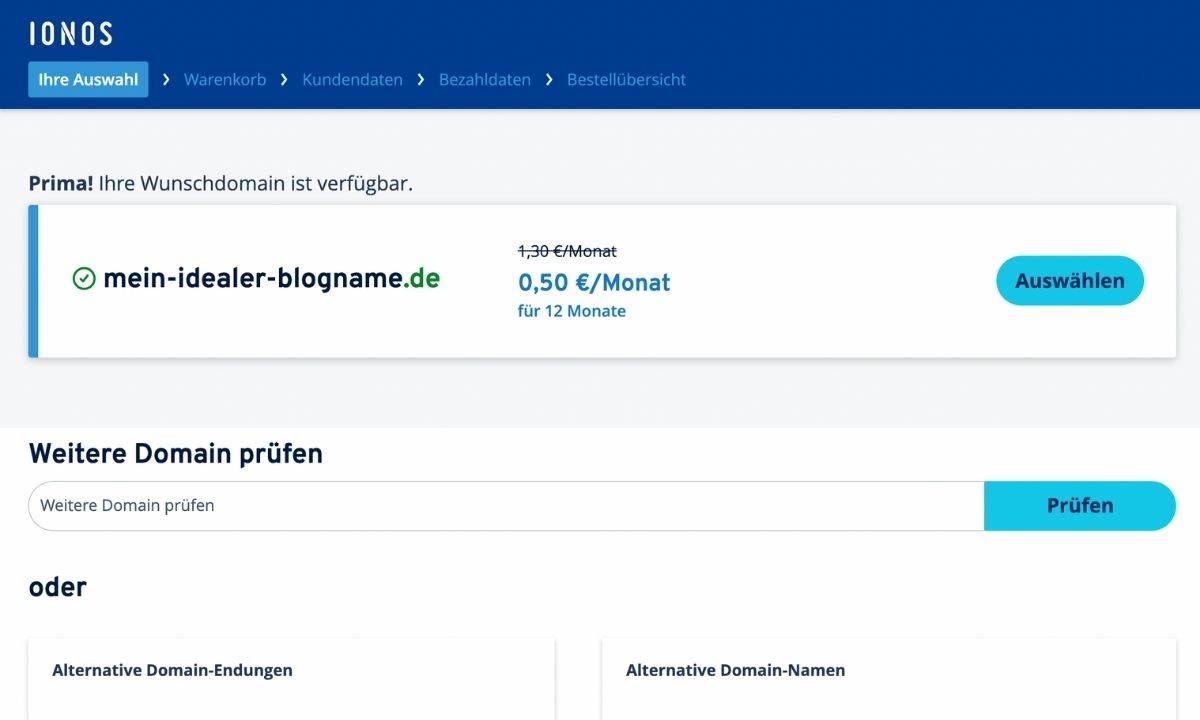
Short and memorable names for popular domains such as .de or .com are quickly taken. You should therefore secure your desired domain as quickly as possible.
To avoid unnecessary detours, I recommend registering the domain where you want to host your WordPress installation.
If you decide to use a different WordPress host later on, you can transfer the domain. This means you are not tied to one provider.
Of course, it is important that your desired blog domain is available. You can check this here:
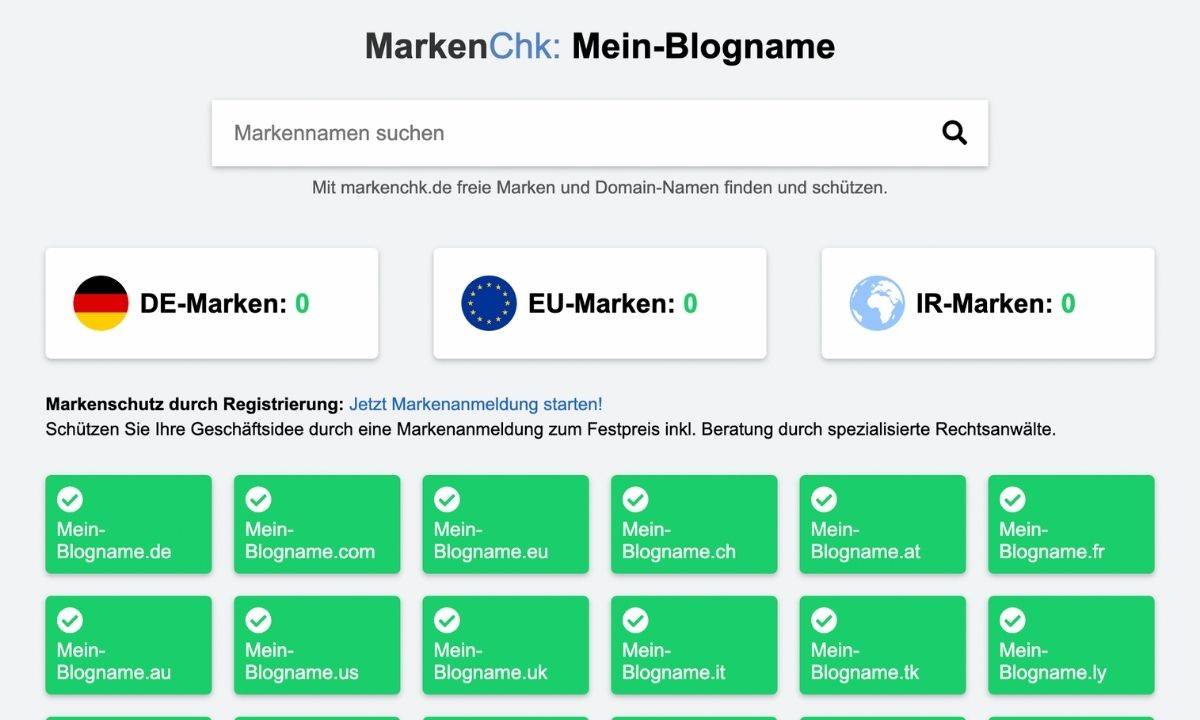
Preparing the domain registration for your blog also includes checking for possible trademark infringements.
Avoid using celebrity names or names of well-known brands. Also avoid typo domains.
Remember that trademark owners can demand injunctive relief and compensation if you are guilty of trademark infringement.
To be on the safe side, you should check your domain.
You can also have your own domain protected as a word mark.
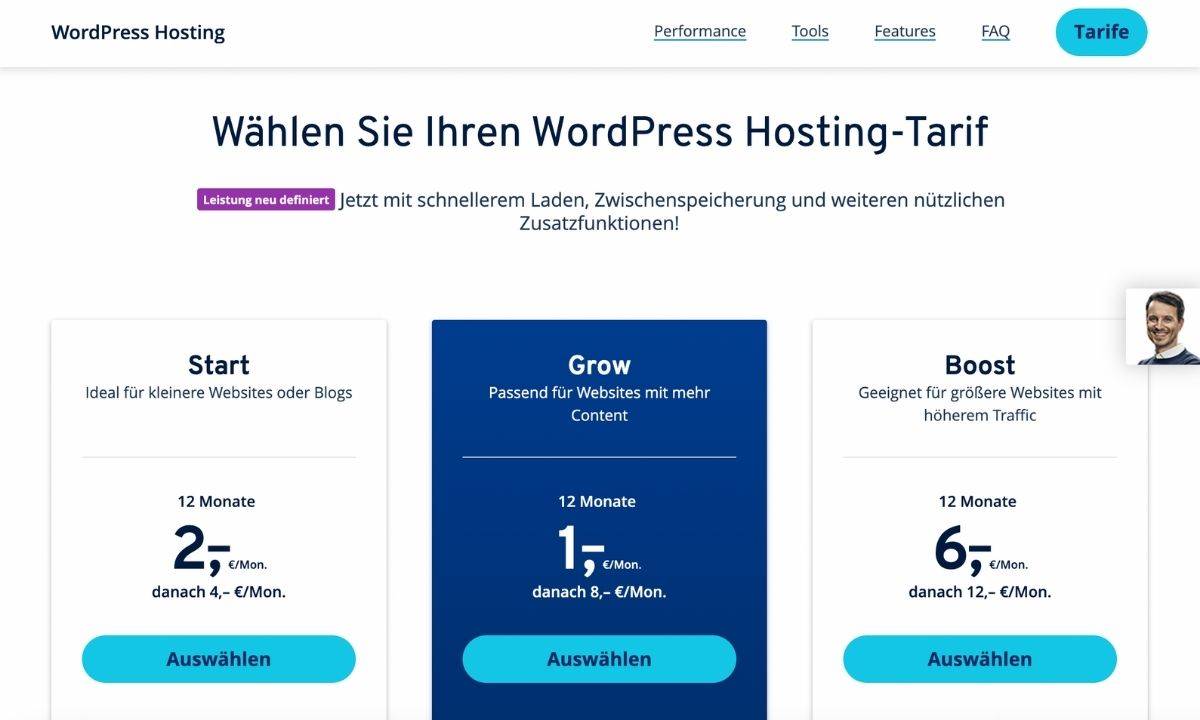
Enough preparation! I’ll now explain step by step how to book your WordPress hosting package and domain using IONOS as an example.
Choose the right package: First select a suitable package on the IONOS website. To get started, I recommend the “WordPress Start” plan. You can upgrade to a higher plan at any time.
Select your domain: You can specify your favourite domain when booking the package. A domain is included in the price of IONOS. If you are still unsure, you can easily add the domain later.
Complete the details: Once you have selected your desired tariff and – optionally – the domain, you need to register. This involves entering your personal details, such as your address and payment details.
Possible additional offers: you can ignore them for the time being. You can always book them later if you are interested.
Let’s get started: Once everything has been filled in and sent, you will receive your access data by e-mail within minutes. You can start setting up your WordPress blog immediately.
Name and domain sorted out? Then it’s time to set it up!
Are you itching to get started? Do you finally want to get started with setting up your WordPress blog? I can understand that!
The good news is that now that you’ve booked your web hosting package and registered your domain, you can put the formalities to one side for now.
We’ll now turn our attention to the practicalities. In the next step, I’ll explain how to set up and configure your WordPress installation.
We’ll enter your blog together and I’ll guide you through the backend, your new control centre for all blog matters.
You’ll also install a few basic plugins with my guidance. You’re just a few steps away from publishing your first blog post.
Now it’s time to move on!
Recommended WordPress webhosts
All recommended providers offer you secure and convenient hosting for your WordPress blog.
I’d be delighted if you let me know what you think of this guide in a comment. Do you have any questions about creating your blog? Feel free to share your results.
Comment, ask, share!
This might also interest you
- Create a photography website in 4 easy steps (2025) Read article
- Create a portfolio website in 4 easy steps (2025) Read article
- How to create a website: The complete guide for beginners Read article
- How to create a blog: 4 easy steps for beginners Read article
- KompoZer – Download, extensions & project background Read article
- School website design: 4 simple steps (2025) Read article



Comments and ratings
Was this article helpful?
Rate article
Share article